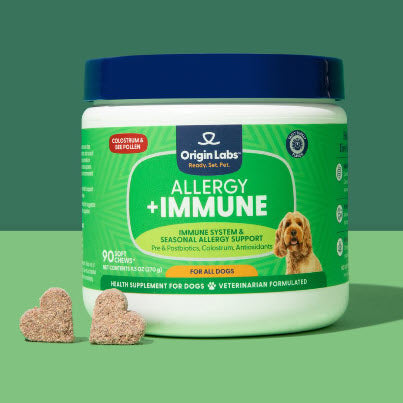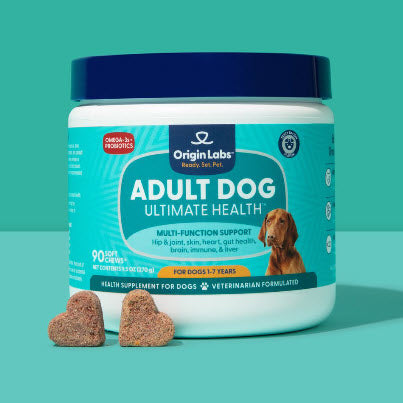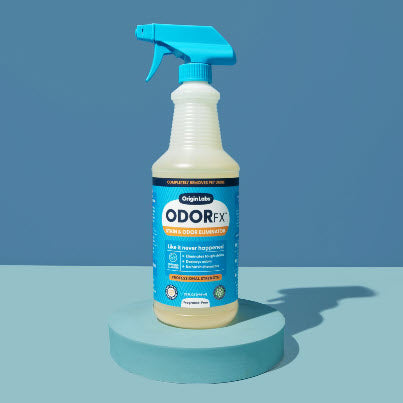Introduction
Can dogs eat tilapia? This question often arises among pet owners looking to diversify their dog's diet with healthy and safe options. Tilapia, a mild-flavored fish, is sometimes considered as a potential addition to canine diets. While it can be a nutritious choice, it's crucial to understand the dietary needs of dogs and the potential risks that come with feeding them certain foods.
Feeding tilapia to dogs can offer various benefits due to its nutritional profile. However, there are several factors that need careful consideration to ensure your dog's health and safety. Dogs have specific dietary requirements, and introducing new foods like tilapia should be done thoughtfully.
Key Takeaway: It is generally safe for dogs to eat tilapia in moderation, provided it is prepared correctly and served appropriately. Responsible pet owners must pay attention to the quality of the fish and avoid potential hazards such as bones, contaminants, or improper cooking methods.
By understanding these aspects, you can make informed decisions about incorporating tilapia into your dog's diet. For additional support, consider exploring Adult Dog Supplements, which provides supplements for adult dogs. Similarly, if you have a growing puppy, you may find Best Puppy Health Supplements beneficial in providing support during their development.
The Nutritional Benefits and Risks of Tilapia for Dogs
Tilapia is a nutritious addition to your dog's diet, providing essential nutrients such as protein, omega-3 fatty acids, vitamin D, phosphorus, and potassium. However, it's important to understand both the advantages and potential drawbacks of feeding tilapia to your furry friend.
Nutritional Composition of Tilapia
Tilapia is a lean source of protein that offers several nutritional benefits for dogs:
- Protein: Essential for muscle growth and repair.
- Omega-3 Fatty Acids: Beneficial for joint health and skin barrier function.
- Vitamin D: Supports immune system function and bone health.
- Phosphorus and Potassium: Vital for muscle function and heart health.
Omega-3 Fatty Acids for Dogs
Omega-3 fatty acids present in tilapia can play a significant role in supporting your dog's joint health. Dogs with arthritis or other joint issues may benefit from the anti-inflammatory properties of omega-3s. Additionally, these fatty acids are essential for maintaining a healthy skin barrier, which can help reduce dryness and irritation.
However, it's crucial to maintain balance. Excessive omega-3 fatty acid supplementation can lead to potential risks such as:
- Altered blood clotting
- Gastrointestinal upset
- Vitamin E deficiency
Vitamin D Content in Tilapia
Vitamin D is another beneficial nutrient found in tilapia. This vitamin contributes to your dog's overall well-being by:
- Supporting immune system function
- Enhancing calcium absorption, thus aiding in bone health
While beneficial, it's important not to over-supplement vitamin D, as excessive amounts can cause toxicity.
Phosphorus and Potassium: Essential Minerals
Phosphorus and potassium are minerals found in tilapia that support various physiological processes in dogs' bodies:
- Phosphorus: Plays a crucial role in energy production, bone formation, and cell repair.
- Potassium: Essential for maintaining proper muscle function and heart health.
Including these minerals in your dog's diet can help ensure they stay active and healthy.
Balancing Tilapia in Your Dog's Diet
While tilapia offers numerous nutritional benefits, it's important to feed it in moderation. Balanced diets are key to preventing nutrient imbalances that could potentially harm your pet. Consulting with a veterinarian can provide personalized recommendations tailored to your dog's specific needs.
Feeding Tilapia to Dogs: Safety Considerations
Potential Hazards of Feeding Raw Fish to Dogs
Feeding raw or undercooked tilapia to dogs comes with certain risks. One major concern is the possibility of bacterial or parasitic infections. Raw fish can contain harmful bacteria like Salmonella and Listeria, which can make dogs very sick. Signs of these infections may include:
- Vomiting
- Diarrhea
- Lethargy
- Fever
Another risk of consuming raw fish is the presence of parasites such as tapeworms and roundworms. These parasites can cause stomach problems and other health issues in dogs. Cooking tilapia thoroughly can help get rid of these risks, making it safe for dogs to eat.
Possible Contaminants in Tilapia
Tilapia that is raised on farms might be exposed to different substances that can be harmful to dogs. Some potential contaminants include:
- Mercury: While tilapia usually has lower levels of mercury compared to other types of fish, it's still important to keep an eye on how much is consumed. Too much mercury exposure can lead to problems with the nervous system and other health issues.
- Pollutants: Farm-raised tilapia could come into contact with pollutants like pesticides and heavy metals because of the farming conditions. These substances can build up in the fish and potentially cause harm when eaten by dogs.
To reduce these risks, choose high-quality tilapia from trusted suppliers who follow strict farming practices. This lowers the chances of contamination and provides a safer food choice for your dog.
Safe Ways to Prepare Tilapia for Dogs
When getting tilapia ready for dogs, it's best to use cooking methods that make sure it's fully cooked while still keeping its nutrients intact. Here are some recommended methods:
- Steaming: A gentle way of cooking that helps preserve the nutrients.
- Baking: Ensures the fish is cooked evenly and gets rid of harmful bacteria.
- Grilling: Adds flavor to the fish while making sure it's completely cooked.
Always take out all the bones from the tilapia before giving it to your dog. Fish bones can get stuck in their throat or cause damage to their digestive system.
The Importance of Moderation
While tilapia can be a healthy part of your dog's diet, it's important to not overdo it. Feeding them too much fish, especially if there's a chance of contamination, could lead to negative health effects. Giving tilapia as an occasional treat helps maintain a balanced and varied diet for your dog.
By knowing about these safety considerations, you can make well-informed choices about including tilapia in your dog's meals without putting their health and well-being at risk.
Sourcing, Preparing, and Serving Tilapia Safely for Dogs
Ensuring the safety and quality of tilapia for your dog involves careful selection and preparation. Here are some key guidelines to follow:
Selecting High-Quality Tilapia
To minimize the risk of contamination:
- Source from Reputable Suppliers: Choose tilapia from well-known brands or suppliers that adhere to stringent safety standards. Look for certifications indicating sustainable practices and minimal use of harmful chemicals.
- Check for Freshness: Fresh tilapia should have clear eyes, a firm texture, and a mild smell. Avoid fish that appears slimy or has an off-putting odor.
- Prefer Wild-Caught Over Farm-Raised: While farm-raised tilapia is more common, wild-caught fish generally have fewer contaminants. However, ensure they come from clean waters.
Cooking Methods
Proper cooking methods can enhance digestibility and retain nutritional value:
- Steaming: This method preserves most nutrients by using gentle heat. Place the tilapia in a steamer until it flakes easily with a fork.
- Baking: Preheat your oven to 375°F (190°C). Season the fish lightly with dog-safe herbs and bake for about 20 minutes.
- Grilling: Grill tilapia over medium heat for 4-5 minutes per side, ensuring an even cook. Use a grilling basket to prevent sticking.
Avoid frying or using excessive oils and seasonings that may be harmful to dogs.
Removing Fish Bones
Fish bones can pose significant hazards:
- Bone Removal: Carefully inspect the cooked fish, removing any small bones. Even tiny fragments can cause choking or internal injuries.
- Double Check: Run your fingers along the fillet to feel for any missed bones before serving it to your dog.
- Filet Option: Consider purchasing pre-filleted tilapia to reduce the risk of bones entirely.
Serving Tips
Once cooked and deboned:
- Small Portions: Serve tilapia in small portions mixed with their regular food or as an occasional treat.
- Monitor Your Dog: Observe how your dog reacts when trying tilapia for the first time, checking for any signs of allergies or digestive issues.
By sourcing high-quality fish, employing safe cooking techniques, and ensuring all bones are removed, you can safely incorporate tilapia into your dog's diet.
Incorporating Tilapia into Your Dog's Balanced Diet
Including tilapia in your dog's diet can be a great way to offer variety and provide additional protein. It's essential to ensure that this is done thoughtfully to maintain a balanced diet for dogs, which includes considering other human foods that are safe for dogs. Here are some tips on how to incorporate tilapia:
1. Occasional Protein-Rich Treat
Tilapia can be served as an occasional treat. This means it should not make up the bulk of your dog's diet but rather complement their regular meals.
- Offer small portions of cooked tilapia as a special treat.
- Limit the frequency to once or twice a week to avoid over-dependence on one protein source.
2. Mixing with Regular Food
Another method is to mix cooked tilapia with your dog's usual food. This ensures they benefit from the nutritional value without disrupting their balanced diet.
- Mix small pieces of tilapia with their regular kibble or wet food.
- Ensure that the addition does not exceed 10% of their total meal to keep their diet balanced.
3. Nutritional Balance
Maintaining a balanced diet for dogs means considering all essential nutrients, not just protein.
- Rotate between different protein sources such as chicken, beef, and fish.
- If necessary, consult a veterinarian about supplements that can help balance any potential nutrient gaps.
4. Moderation in Feeding
Moderation is key when feeding tilapia or any new food to dogs. Overfeeding can lead to nutritional imbalances or health issues.
- Keep an eye on your dog’s health and behavior after introducing tilapia.
- Adjust portions based on your dog's size, age, and activity level.
5. Notes on Preparation
Proper preparation is crucial for safety and nutrition:
- Stick to healthy cooking methods like steaming, baking, or grilling without added fats or seasonings.
- Always remove bones before serving to prevent choking hazards.
By incorporating tilapia in these ways, you can enhance your dog's diet while ensuring it remains balanced and nutritious.
When to Avoid Feeding Tilapia to Your Dog
Certain health conditions in dogs necessitate caution when considering tilapia as part of their diet. Specifically, dogs with allergies or pancreatitis should avoid tilapia.
Dogs with Allergies
Some dogs may have allergic reactions to fish, including tilapia. Symptoms can include:
- Itchy Skin: Excessive scratching or licking.
- Gastrointestinal Issues: Vomiting or diarrhea.
- Ear Infections: Frequent ear infections could be a sign of a food allergy.
If your dog exhibits any of these symptoms after consuming tilapia, it’s essential to discontinue feeding it and consult with a veterinarian. For further information on food allergies, you can refer to this article from the Veterinary Partner.
Pancreatitis in Dogs
Although tilapia is generally low in fat compared to other types of fish, the preparation method can significantly alter its fat content. Dogs with pancreatitis require a low-fat diet to prevent exacerbation of the condition. Including even small amounts of fat from sources like improperly prepared tilapia can trigger these symptoms in affected dogs:
- Lethargy: Reduced energy levels and reluctance to move.
- Vomiting and Diarrhea: Frequent gastrointestinal distress.
- Abdominal Pain: Sensitivity or discomfort around the abdomen.
If your dog has pancreatitis, it's important to consult with a veterinarian before introducing tilapia into its diet.
Other Considerations
Dogs with other health issues such as kidney disease or specific dietary restrictions should also avoid tilapia unless recommended by a veterinarian.
It's crucial always to monitor your pet for any adverse reactions when introducing new foods into their diet. Regular consultations with a veterinarian can help tailor a diet that meets your dog's specific health needs while minimizing risks.
Alternatives to Tilapia for Meeting Your Dog's Nutritional Needs
Other Fish for Dogs
Several types of fish can provide similar nutritional benefits as tilapia:
- Salmon: Rich in omega-3 fatty acids, salmon supports joint health and maintains a healthy coat.
- Sardines: These small fish are packed with essential nutrients, including omega-3s, vitamin D, and calcium.
- Mackerel: Another oily fish that is rich in omega-3 fatty acids, promoting heart health and reducing inflammation.
- Cod: A lean fish that offers a good source of protein without the high fat content, making it suitable for dogs needing a low-fat diet.
- Herring: Similar to sardines, herring is loaded with beneficial fatty acids and vitamins.
Alternative Protein Sources
For dogs with dietary restrictions or preferences, consider these alternative protein sources:
- Chicken: A lean meat that is highly digestible and often used in commercial dog foods. It provides essential amino acids for muscle maintenance.
- Turkey: Similar to chicken but slightly lower in fat, making it an excellent choice for dogs requiring a leaner protein option.
- Beef: High in protein and rich in iron, beef can be a hearty addition to a dog's diet when fed in moderation.
- Lamb: Often recommended for dogs with food sensitivities or allergies due to its hypoallergenic properties.
- Eggs: A complete protein source that is easy to digest and provides all the essential amino acids dogs need.
Considerations for Dietary Restrictions
Some dogs may have specific dietary needs or restrictions. Consult with your veterinarian before introducing new proteins:
"It's important to tailor your dog's diet to their unique health requirements. Always seek professional advice."
Including a variety of protein sources can help ensure your dog receives a balanced diet while also catering to their individual nutritional needs.
Consulting with a Veterinarian: Personalized Diet Recommendations for Your Dog
If you're thinking about changing or adding to your dog's diet, it's important to talk to a veterinarian first. Every dog has different nutritional needs based on things like their age, breed, size, activity level, and any existing health conditions they may have. A vet can give you personalized advice on what to feed your dog to keep them healthy.
Why You Need Individualized Advice from a Vet
Here are some reasons why it's essential to get guidance from a vet when it comes to your dog's diet:
- Understanding Your Dog's Needs: Vets can evaluate your dog's overall health and figure out the right amounts of proteins, fats, carbohydrates, vitamins, and minerals they should be getting.
Managing Health Conditions: If your dog has specific medical issues like allergies, pancreatitis, or kidney disease, their diet may need to be adjusted accordingly. For example:
- Dogs with allergies might require hypoallergenic food.
- Dogs with pancreatitis should be on a low-fat diet to prevent flare-ups.
- Dogs with kidney disease need to have controlled levels of phosphorus in their meals.
The Advantages of Getting Professional Help
Here are some benefits of consulting with a vet when it comes to your dog's nutrition:
- Avoiding Nutritional Imbalances: Giving your dog too much or too little of certain nutrients can lead to health problems. Vets can help you find the right balance.
- Ensuring Food Safety: It's important to make sure that the food you're giving your dog is free from any harmful substances or allergens. Vets can recommend trusted brands.
- Managing Portions: Feeding your dog the right amount of food is crucial for maintaining a healthy weight. Vets can advise you on portion sizes.
Important Questions to Ask Your Vet
If you're considering adding tilapia or similar foods to your dog's diet, here are some questions you can ask your vet:
- Is it safe for my dog to eat tilapia based on their current health condition?
- How often should I include tilapia in my dog's meals?
- Are there any potential allergies or side effects that I need to watch out for?
How to Create a Well-Balanced Diet Plan
When it comes to feeding dogs, vets often recommend creating a diet plan that includes a variety of protein sources. This helps prevent your dog from relying too heavily on just one type of protein while also ensuring they get all the nutrients they need. By following the advice of a veterinary professional, you can confidently make choices about what to feed your dog.
Remember, consulting with a vet not only gives you peace of mind but also ensures that any changes you make to your dog's diet will benefit their overall health and happiness.
Conclusion on Feeding Tilapia to Dogs
Tilapia can be a beneficial addition to your dog's diet, offering nutritional advantages such as omega-3 fatty acids, vitamin D, phosphorus, and potassium. These nutrients can support joint health, skin health, immune function, bone health, muscle function, and heart health.
However, tilapia should not be the sole source of these nutrients. A balanced diet that includes a variety of protein sources is essential for maintaining your dog's overall health. Always ensure that the tilapia is properly sourced and prepared to avoid potential risks like bacterial or parasitic infections and exposure to contaminants.
Key Takeaways:
- Nutritional Benefits: Tilapia provides essential nutrients that can support various aspects of your dog's health.
- Variety in Diet: Ensure that tilapia is part of a diverse diet to meet all nutritional needs.
- Veterinary Consultation: Always consult with a veterinarian before making any significant dietary changes for your dog.
Prioritizing variety and seeking professional advice ensures that your dog receives a well-rounded and safe diet.
FAQs (Frequently Asked Questions)
Can dogs eat tilapia?
Yes, it is generally safe for dogs to eat tilapia in moderation. However, there are important factors to consider to ensure their health and safety.
What are the nutritional benefits of tilapia for dogs?
Tilapia contains omega-3 fatty acids, vitamin D, phosphorus, and potassium, which can benefit dogs' health when included in their diet. These nutrients may support joint health, skin barrier function, immune system function, bone health, muscle function, and heart health.
Are there any safety considerations when feeding tilapia to dogs?
There are concerns about the safety of feeding raw or undercooked tilapia to dogs, including the risk of bacterial or parasitic infections. Additionally, there is a potential risk of exposure to contaminants such as mercury or pollutants in farm-raised tilapia.
How should tilapia be sourced, prepared, and served safely for dogs?
It is important to select high-quality tilapia from reputable suppliers to minimize the risk of contamination. Recommended cooking methods include steaming, baking, or grilling to ensure digestibility and reduce nutrient loss. All bones should be removed before feeding it to dogs to avoid potential choking or injury.
How can tilapia be incorporated into a dog's balanced diet?
Tilapia can be included as an occasional protein-rich treat or mixed with their regular food in small portions as part of a balanced diet for dogs.
When should I avoid feeding tilapia to my dog?
It may be necessary to avoid feeding tilapia to dogs with specific health conditions such as allergies or pancreatitis.
What are some alternatives to tilapia for meeting a dog's nutritional needs?
Other types of fish that are safe and healthy for dogs include salmon and trout. Additionally, alternative protein sources can be considered for dogs with dietary restrictions or preferences.
Why is it important to consult with a veterinarian regarding my dog's diet?
Consulting with a veterinarian is crucial to determine the most appropriate diet for an individual dog, taking into account their specific nutritional needs and any underlying health issues.
Can tilapia be relied upon as the sole source of nutrients for dogs?
While tilapia can offer certain nutritional benefits to dogs, it should not be relied upon as the sole source of these nutrients. Variety is key in their diet, and consultation with a veterinarian is always recommended before making any significant changes or additions to their meals.








